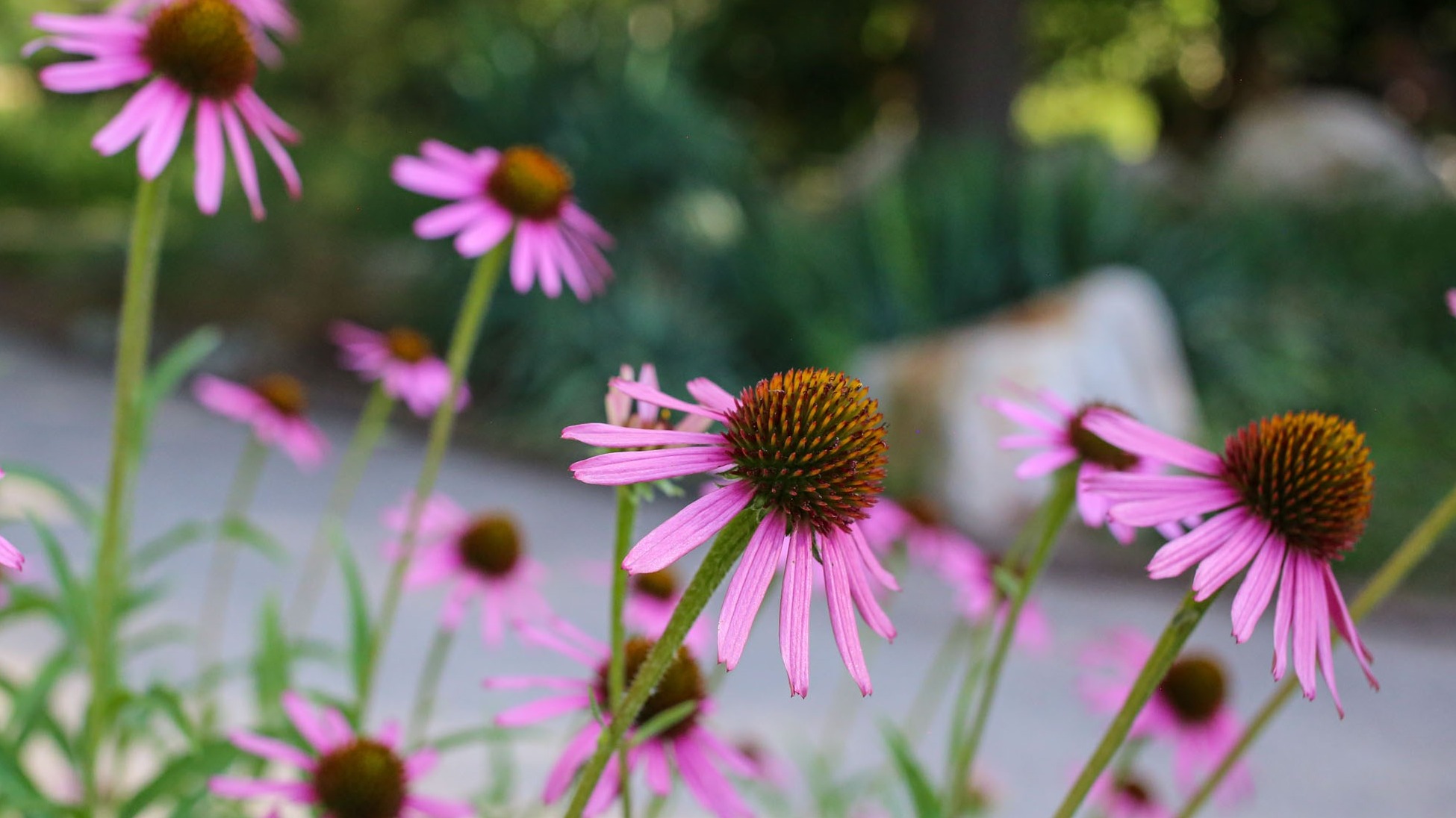Written By:
Bridget Barkema, Naturalist Educator at Ogden Nature Center
Who's Who? A Guide to Native Utah Owls
There are many owl species native to Utah, but they can be tricky to spot if you don’t know where to look. Some blend right into their surroundings, while others are only active at night. Here's a quick guide to a few of the most common owls you might see in Utah and where to find them.
Western Screech Owls
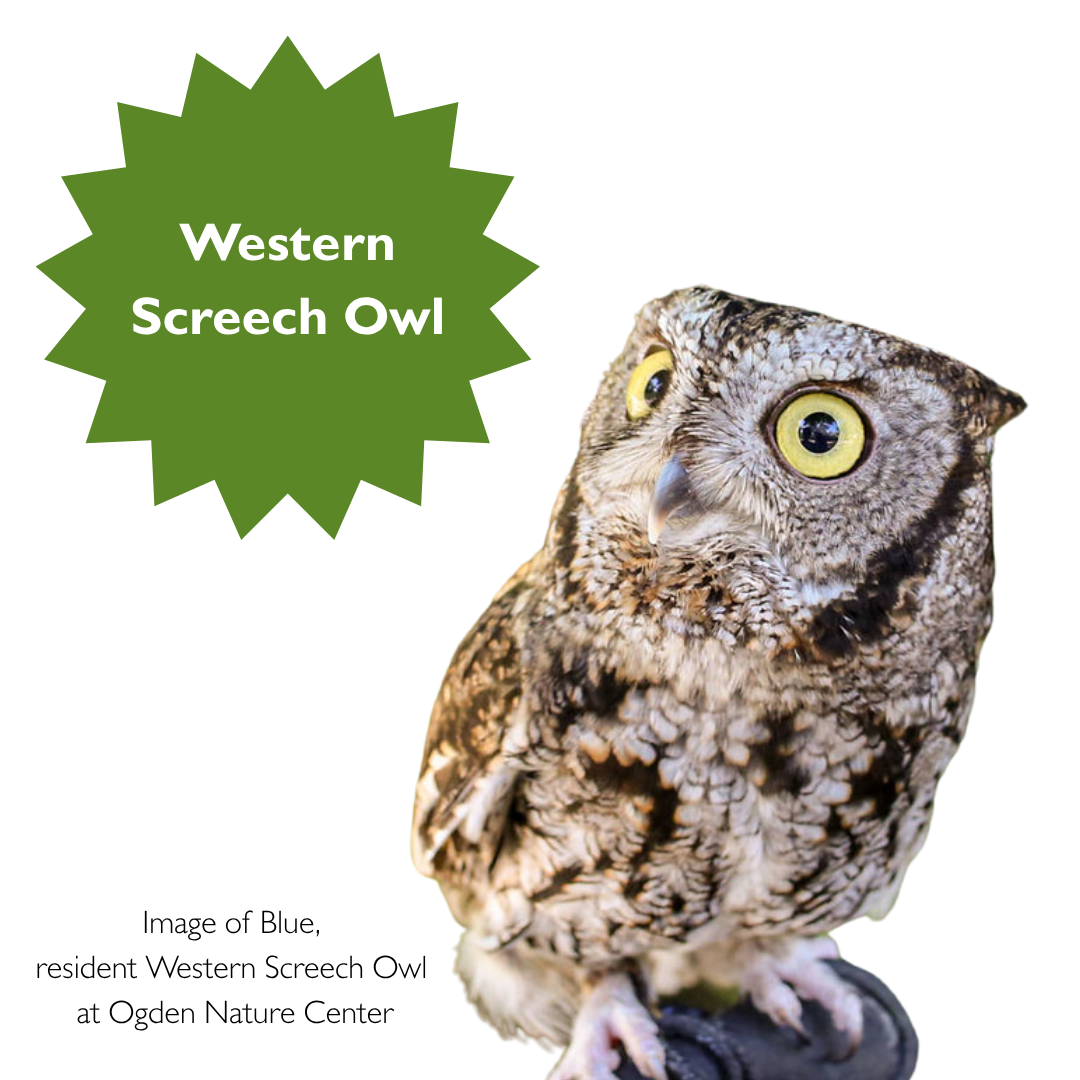
These little owls are masters of disguise. Western screech owls are quite small and have excellent camouflage, often blending into tree bark almost perfectly. They’re cavity nesters, meaning they don’t build their own nests. Instead, they take over pre-existing holes in trees or use nest boxes if available. Listen for their soft, trilling calls around wooded areas at dusk or dawn. (Fun fact: they don’t actually screech)
Burrowing Owls
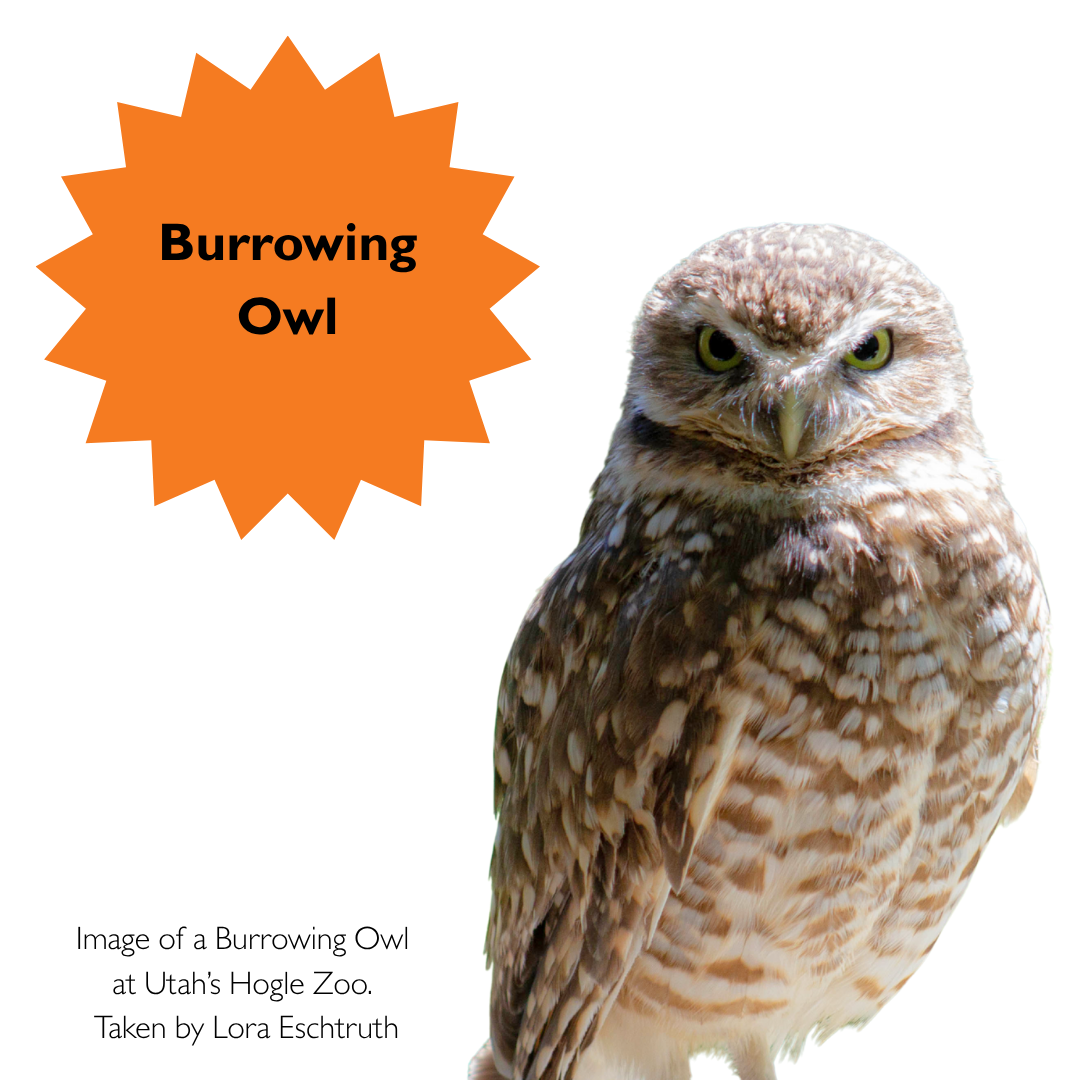 If you're out at Antelope Island, keep your eyes on the ground—literally. Burrowing owls live in open grasslands and deserts, and true to their name, they nest in underground burrows. They’re a bit larger than screech owls but still relatively small. With their long legs, bright yellow eyes, and tendency to perch on fence posts or scurry into burrows, they’re one of the more active and visible owl species during the day.
If you're out at Antelope Island, keep your eyes on the ground—literally. Burrowing owls live in open grasslands and deserts, and true to their name, they nest in underground burrows. They’re a bit larger than screech owls but still relatively small. With their long legs, bright yellow eyes, and tendency to perch on fence posts or scurry into burrows, they’re one of the more active and visible owl species during the day.
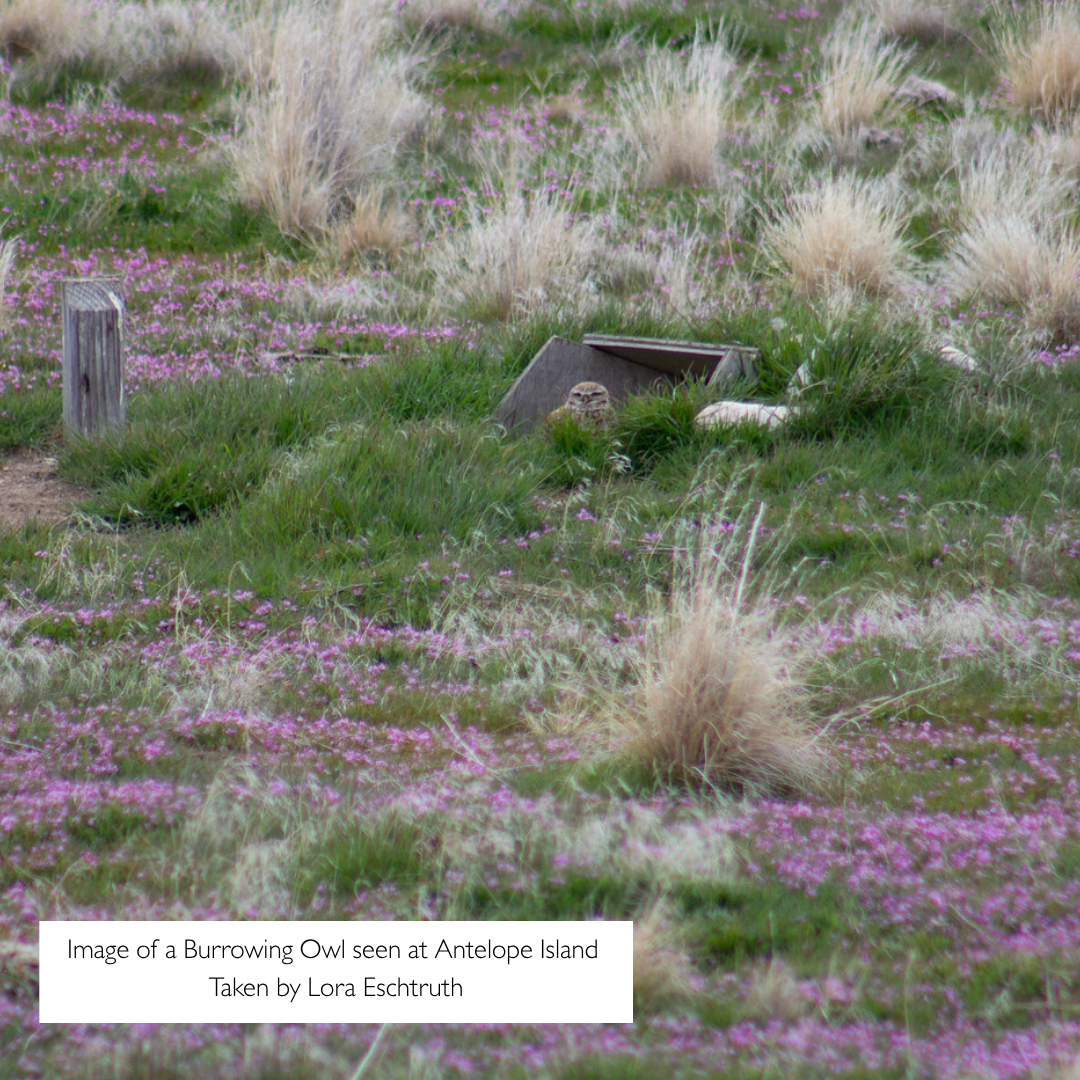
Great Horned Owls
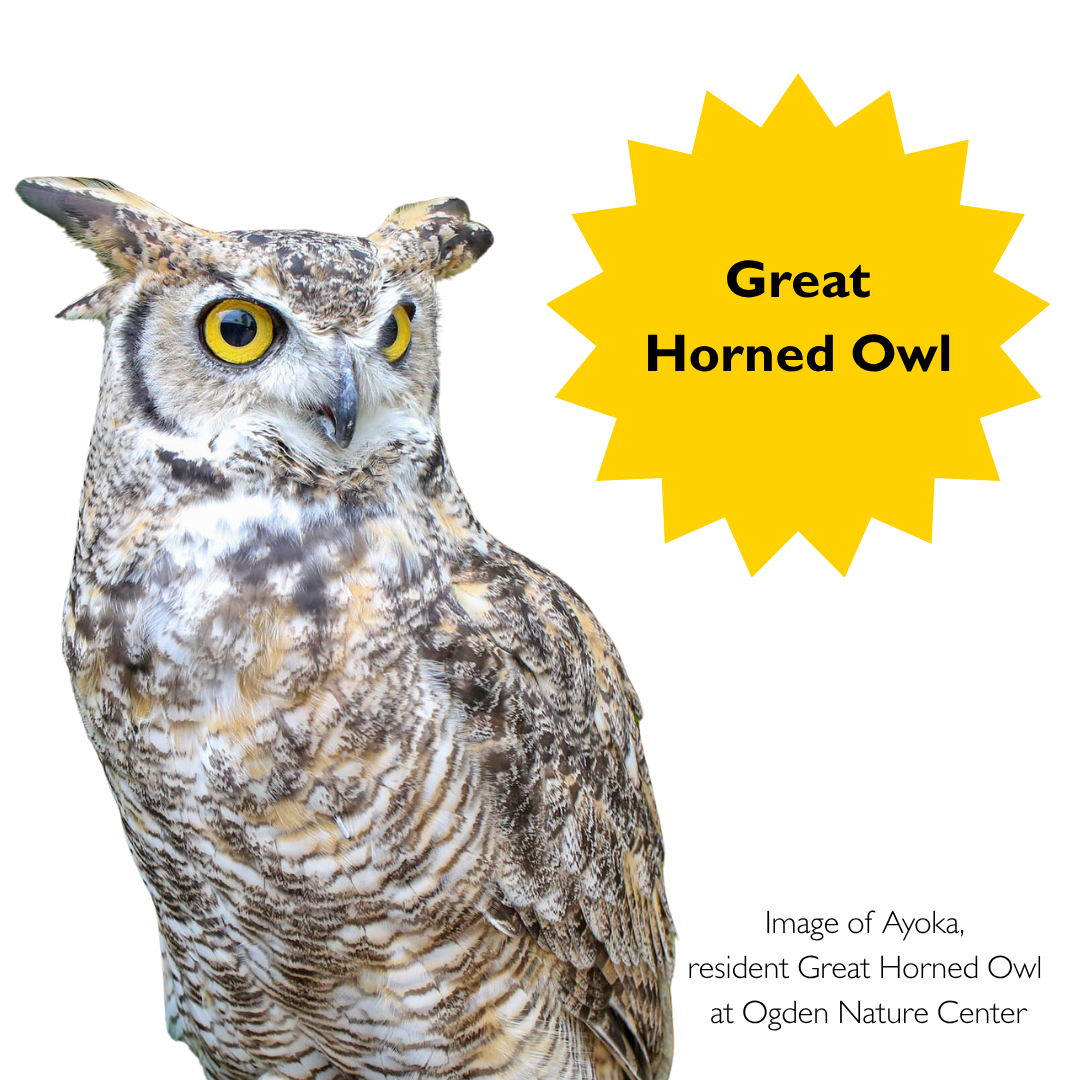 One of the most iconic owls in North America, great horned owls are big, bold, and powerful. They’re named for the prominent feather tufts on their heads that resemble horns. You’ll usually find them in tall trees, rocky cliffs, or even on the beams of outdoor patios. Their deep hooting calls are classic and often heard at night.
One of the most iconic owls in North America, great horned owls are big, bold, and powerful. They’re named for the prominent feather tufts on their heads that resemble horns. You’ll usually find them in tall trees, rocky cliffs, or even on the beams of outdoor patios. Their deep hooting calls are classic and often heard at night.
Barn Owls
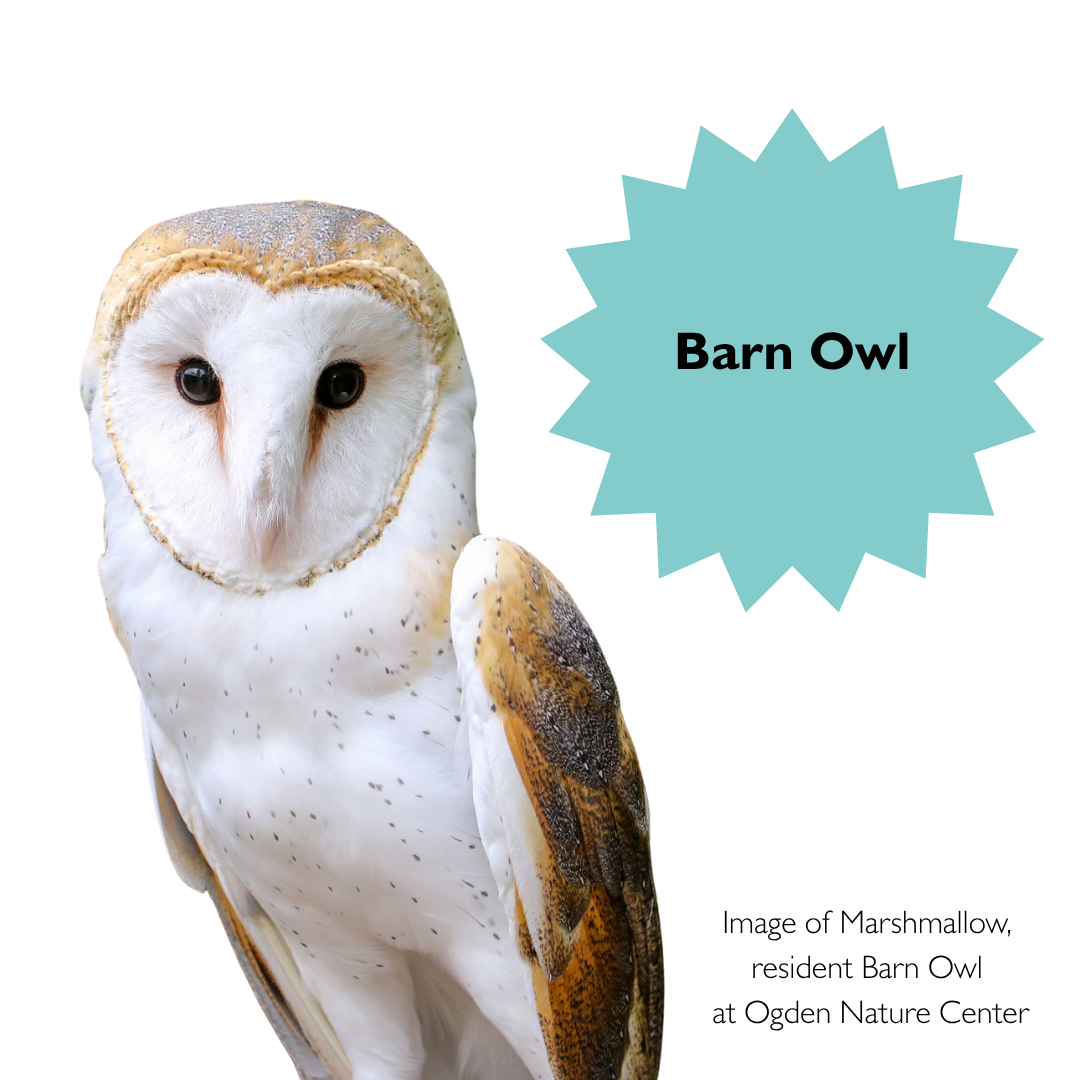 Barn owls are ghostly and beautiful, with pale, heart-shaped faces and silent flight. They tend to roost in tall, quiet places like barns, old buildings, or dense trees, making them a bit harder to spot. They're more active at night and are excellent mousers, making them a farmer’s favorite.
Barn owls are ghostly and beautiful, with pale, heart-shaped faces and silent flight. They tend to roost in tall, quiet places like barns, old buildings, or dense trees, making them a bit harder to spot. They're more active at night and are excellent mousers, making them a farmer’s favorite.
Tips for Spotting Owls in Utah:
- Go out early in the morning or just after sunset—most owls are crepuscular or nocturnal.
- Stay quiet and move slowly.
- Look for whitewash (owl droppings) at the base of trees, as well as pellets (bones, feathers, etc.)
- Bring binoculars
Whether you’re an avid birder or just an occasional hiker, spotting an owl in the wild is always a special experience. With a bit of patience and a sharp eye, you might just meet one of these cute little guys in person.







